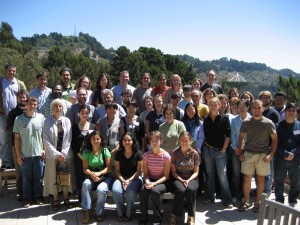 The study of population is important for any country in order to understand how the composition of population changes over time and what implications these changes might have for the future. Usually, regularly held censuses establish such important findings as total number of people residing in the country, sex ratio of the population, median age, and sex/age distribution across the nation, regions, states, etc. In the United States, there were regularly (every ten years) held censuses since 1790 with the last one taking place in 2010. According to the U.S. Census Bureau, compared with the population data from a previously held census of 2000, several trends became apparent in 2010. First, total population of the United States grew by 9.7 percent from 281.4 million to 308.7 million people. The growth was slightly slower than during the previous decade (13.2 percent), but comparable to the one in the period of 1980-1990 (9.8 percent). Second, male population grew by 9.9 percent, while female one grew by 9.5 percent. Thus, the sex ratio was 49.1 percent male to 50.9 percent female in 2000 (or 96.3 men per 100 women), and 49.2 percent male to 50.8 percent female in 2010 (or 96.7 men per 100 women). Male population grew a little bit faster than a female one during the last decade, mostly due to narrowing mortality gap, especially at older age. Although there are usually 105 males to 100 females at birth, the number of females increases with age (because men die in larger numbers at any age). Thus, in 2010 in all four major US regions (Northeast, Midwest, West, and South) females outnumbered males with the highest sex ratio in the West (99.3 male to 100 female) and the lowest ratio in the Northeast (94.5). Third, and probably the most important, trend which became apparent was that older population of the United States grew at a much faster rate than the younger one during the last decade.
The study of population is important for any country in order to understand how the composition of population changes over time and what implications these changes might have for the future. Usually, regularly held censuses establish such important findings as total number of people residing in the country, sex ratio of the population, median age, and sex/age distribution across the nation, regions, states, etc. In the United States, there were regularly (every ten years) held censuses since 1790 with the last one taking place in 2010. According to the U.S. Census Bureau, compared with the population data from a previously held census of 2000, several trends became apparent in 2010. First, total population of the United States grew by 9.7 percent from 281.4 million to 308.7 million people. The growth was slightly slower than during the previous decade (13.2 percent), but comparable to the one in the period of 1980-1990 (9.8 percent). Second, male population grew by 9.9 percent, while female one grew by 9.5 percent. Thus, the sex ratio was 49.1 percent male to 50.9 percent female in 2000 (or 96.3 men per 100 women), and 49.2 percent male to 50.8 percent female in 2010 (or 96.7 men per 100 women). Male population grew a little bit faster than a female one during the last decade, mostly due to narrowing mortality gap, especially at older age. Although there are usually 105 males to 100 females at birth, the number of females increases with age (because men die in larger numbers at any age). Thus, in 2010 in all four major US regions (Northeast, Midwest, West, and South) females outnumbered males with the highest sex ratio in the West (99.3 male to 100 female) and the lowest ratio in the Northeast (94.5). Third, and probably the most important, trend which became apparent was that older population of the United States grew at a much faster rate than the younger one during the last decade.
According to 2010 data, the age group of under 18 comprised 24.0 percent of total population (grew by 2.6 percent), those aged 18-44 accounted for 36.5 percent (grew by 0.6 percent), aged 45-64 were 26.4 percent of population (grew by 31.5 percent), and those aged 65 and over accounted for 13. 0 percent (grew by 15.1 percent). Consequently, the median age of American population was 37.2 years on 2010 compared to 35.3 years in 2000 with the highest median age in Northeast (39.2 years) and the lowest median age in West (35.2 years). While American population is older than developing countries’ population, overall it is still relatively young compared to other developed countries. Still, the data from 2010 census demonstrates that American population is not only growing steadily but also aging. Important governmental policies – be they on a federal, state, or county level – have to take into account the composition of population in order to be effective and thought-through. Many policies such as educational, social, healthcare and such greatly depend on these findings. – Becky Kospanova

